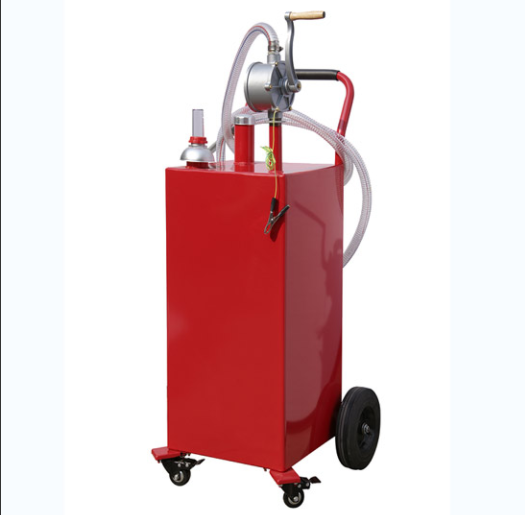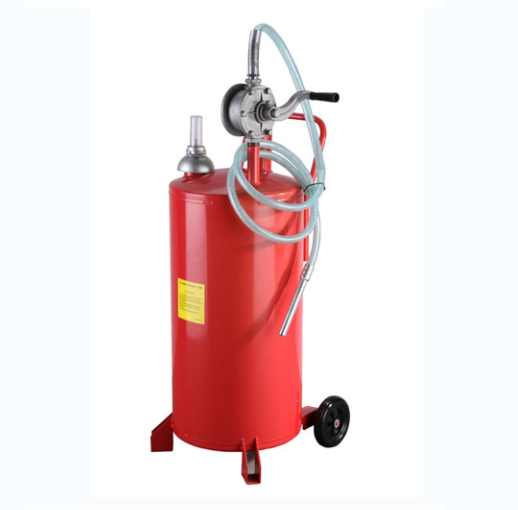Your Position: Home - Automobiles Motorcycles - 5 Symptoms of A Bad Oil Pump
There are common symptoms you will notice when an oil pump fails, such as a drop in oil pressure or an overheated engine. If you hear a noise coming from your engine's valve train or oil pump, or if your car won't start at all, it's almost like a death sentence for your engine's oil pump.
In this guide, you'll learn to spot a bad oil pump in your vehicle. Recognizing the signs of a bad oil pump is key.
The engine oil pump is responsible for pressurizing the entire oil system. Therefore, a drop in oil pressure is the first sign of a problem.
However, most cars do not have an oil pressure gauge. Your vehicle may be equipped with an oil pressure warning light or indicator.
The light is in the shape of an oil can. When it turns on, this indicates that you should stop driving immediately to prevent any further damage to your engine.

Next, a faulty oil pump can also cause the engine to overheat. When the oil pump fails to circulate the oil properly, the engine will quickly overheat. The excess heat will certainly overwhelm the cooling capacity of that system.
This is another reason why you must stop the engine as soon as you notice signs of a faulty oil pump and have it towed to the shop.
First, you will hear noise from the valve train system. That's the engine component that includes the hydraulic tappets, pushrods, valve guides and other moving parts.
When not enough engine oil flows over to lubricate these parts, they begin to rub against each other. When you hear these sounds, you must turn off your car immediately.
Of course, a faulty oil pump itself will make a noise. However, most drivers don't notice this noise unless they look for it.
Suggested reading:If you have the opportunity to hear a noise coming directly from the oil pump while inspecting the engine compartment, it is an early sign of a faulty part. You will hear a whining or whirring sound as its internal moving parts wear out. You will hear these sounds even when the car is idling.

OIL PUMP
In the most severe cases of fuel pump failure, your car won't start at all. None of its parts can move, so the combustion process does not take place.
At this stage, you have no choice but to tow the vehicle to the workshop. In addition to replacing the fuel pump, the mechanic must thoroughly inspect the engine for any other signs of damage.
No, you can't drive with a bad fuel pump. Doing so is a bad idea for two reasons.
First, a faulty oil pump cannot circulate oil to lubricate engine components. Therefore, when you keep your engine running without enough oil, its metal parts will rub against each other and damage the engine from the inside.
Second, insufficient circulating oil can cause the engine to overheat and cause engine damage.
Therefore, as soon as you become aware of bad oil pump symptoms, turn off the engine and have someone troubleshoot it.
To learn more about engine oil pumps and other auto parts, check out the blog on AUTOTOOLDEPOT. There are many educational blog posts to help you understand the condition of your car, and contact us for product listings and quotes! Autotools Depot has been in this business for more than 20 years and served lots of customers around the world. With our years of experience behind us, we guarantee that you will be satisfied with our products and service.
Suggested reading:276
0
0
Comments
All Comments (0)
Related Articles
Car Mat Clips: Securing Safety and Convenience
Car mat clips, often overlooked but highly functional, play a crucial role in ensuring safety and convenience inside vehicles. These small but mighty accessories serve as fasteners that secure car mats in place, preventing them from shifting or slipping while driving.
By May
149
0
0
How Do I Know if My Timing Belt Tensioner Is Bad?
The timing belt tensioner plays a crucial role in the proper functioning of an engine's timing belt system. It is responsible for maintaining the correct tension of the timing belt, which ensures synchronized movement between the engine's crankshaft and camshaft. If the timing belt tensioner becomes faulty or fails, it can lead to severe engine damage.
By Hou
162
0
0
Car Mat: Enhance Your Driving Experience with Premium Comfort and Protection
When it comes to optimizing your driving experience, a high-quality car mat is an essential accessory that often goes overlooked. Car mats not only provide a comfortable and clean surface for your feet but also offer protection to your vehicle's interior.
By May
153
0
0
Factors Affecting the Performance of Commercial Vehicle Brake Pads
The performance of commercial vehicle brake pads plays a critical role in ensuring safe and effective braking. Several factors can influence the performance of these brake pads. Understanding these factors is essential for maintaining optimal braking performance and ensuring the safety of commercial vehicles.
By May
153
0
0
Advantages and Benefits of Electric Trucks
Electric trucks have gained significant attention and popularity in recent years as an alternative to traditional diesel-powered trucks. They offer numerous advantages and benefits that make them an attractive option for businesses and fleet operators.
By May
153
0
0
Understanding Cylinder Head Damage: Causes and Consequences
The cylinder head, being a crucial component of an internal combustion engine, is susceptible to various forms of damage. This article aims to provide a comprehensive understanding of why cylinder head damage occurs, exploring its causes and the potential consequences that can arise.
By Hou
146
0
0
Ceramic vs. Metallic Brake Pads: Which is Best for Your Vehicle?
When it comes to maintaining the safety and performance of your vehicle, one crucial component to consider is the brake system. Brake pads play a vital role in stopping your vehicle effectively, and choosing the right type of brake pads can greatly impact your driving experience.
By July
147
0
0
How do I know if my coil springs are bad?
Coil springs are vital components of a vehicle's suspension system, providing support, stability, and a smooth ride. Over time, however, coil springs can wear out or become damaged due to various factors. Recognizing the signs of bad coil springs is crucial for maintaining the safety and performance of your vehicle.
By July
143
0
0